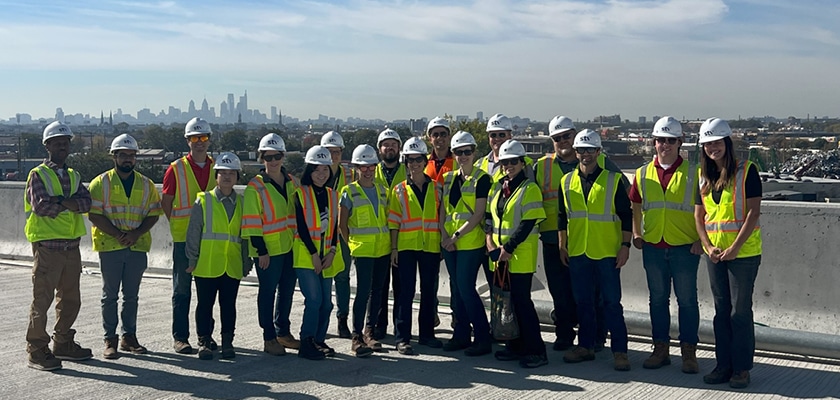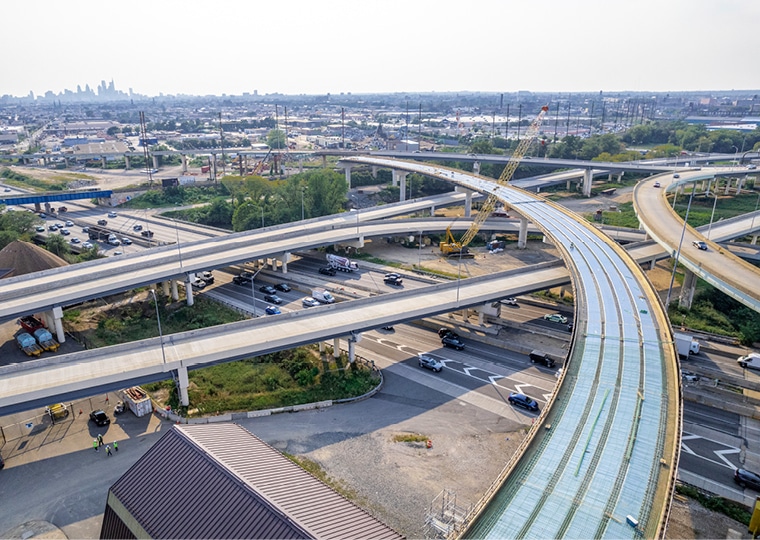
The Pennsylvania Department of Transportation (PennDOT) recently opened the new southbound ramps at the Betsy Ross Interchange (BRI) at I-95 in Philadelphia, marking a significant milestone in this massive construction program that aims to enhance connectivity between I-95, the Betsy Ross Bridge, and the surface streets at the interchange.
STV is leading the design for this multi-stage, $880 million BRI reconfiguration as part of the reconstruction of I-95 in Pennsylvania, one of the most extensive highway improvement programs in the Northeast. This most recent milestone marked the completion of the Section BR2 stage.

On behalf of PennDOT, STV is providing a range of environmental, engineering, and construction-related services for the BRI’s reconfiguration, rehabilitation, and reconstruction. This long-term project will ease congestion for Philadelphia residents and visitors. Additionally, our team is providing preliminary engineering for each of the construction phases, including field surveys; right-of-way, drainage, and erosion and sedimentation control plans; pavement, highway lighting, and signage design; hydrologic and hydraulic studies; geotechnical investigations; utility coordination; public involvement programs; and a Categorical Exclusion Evaluation study.

STV designed a large embankment that included a precast retaining wall to replace the existing structure-the most considerable design height for a T-Wall constructed in Pennsylvania (approximately 50’).
In planning the project’s third phase, STV is reconstructing the existing three-level interchange, improving ramp connections, and enhancing safety. The design process posed a considerable challenge for our team as the reconstructed ramps needed to seamlessly connect to existing structures and navigate complex site constraints, including crossings under electrical transmission lines and over passenger and freight rail lines, private residences, a maintenance yard, and an adjacent creek.

New ramps to I-95 southbound over Conrail and N.J. Transit. The curved ramp (left) is the first curved tubular flange girder span design and constructed in the U.S. Tubular flange girders were used due to construction challenges associated with the rail lines and electrical transmission lines.
“The intricate site conditions provided an opportune setting for PennDOT to introduce the nation’s inaugural steel-curved tubular flange girder,” Stryker added. “Thanks to PennDOT’s initiative and our project team’s innovative spirit, STV rose to meet the challenge.”





